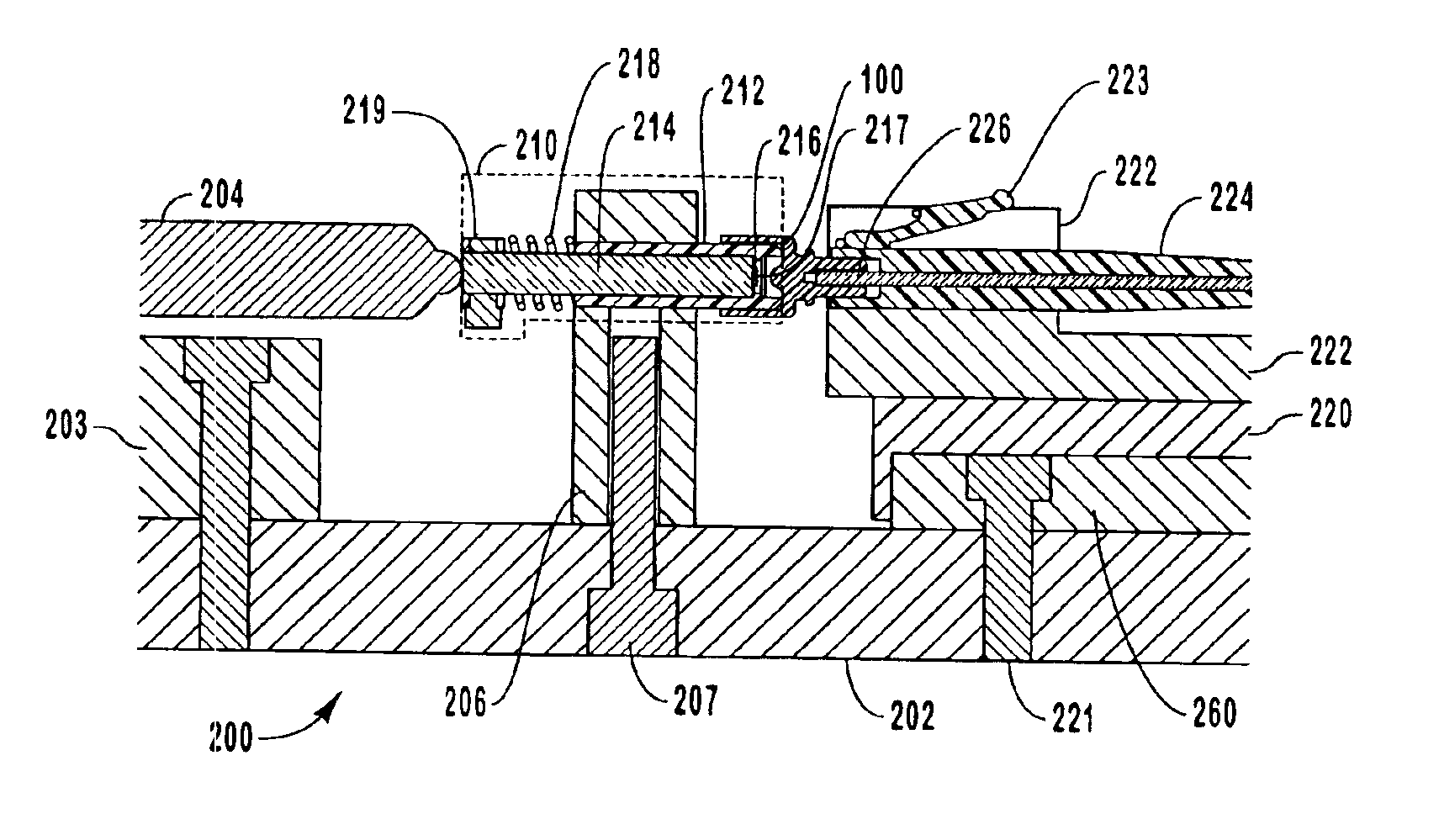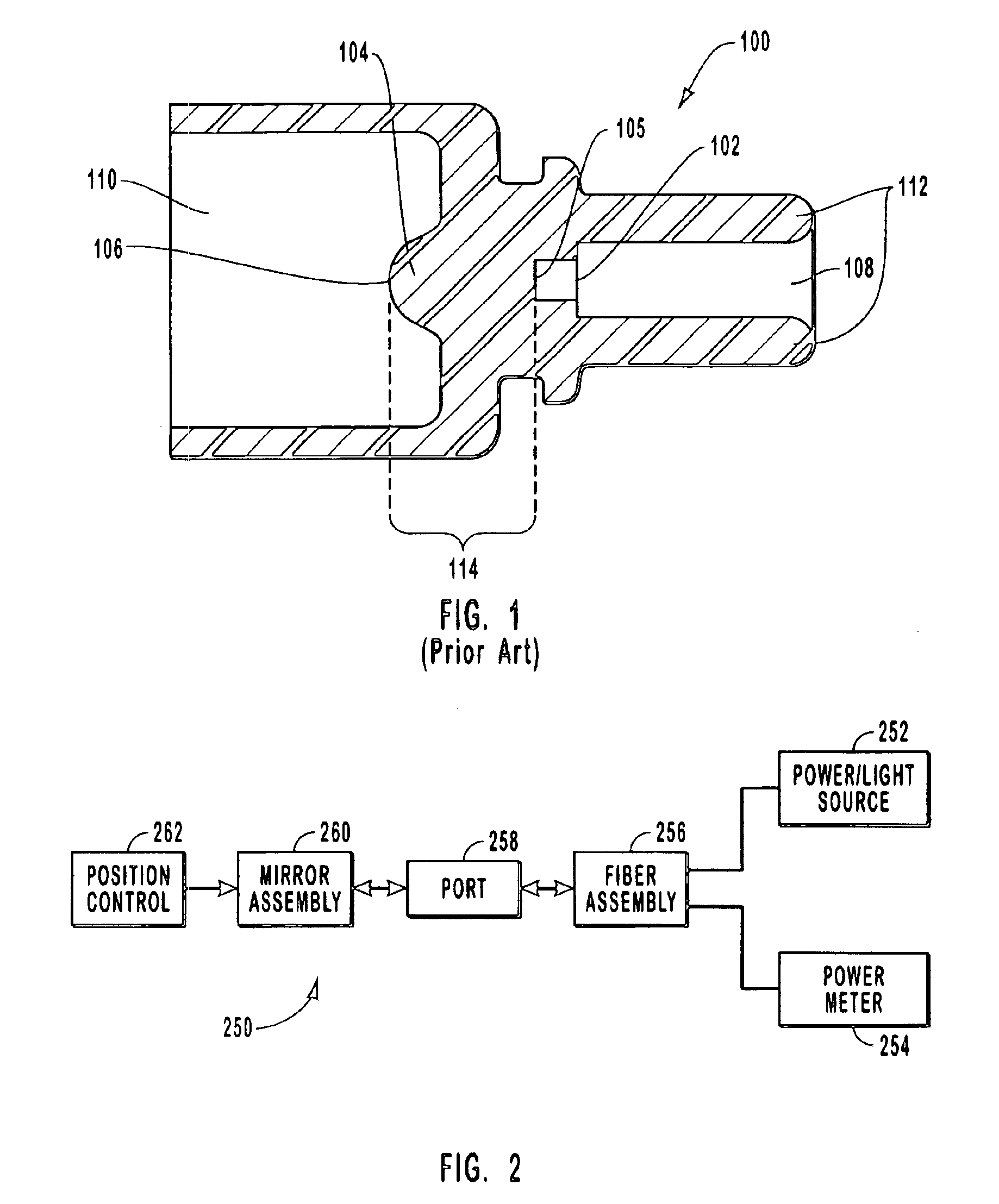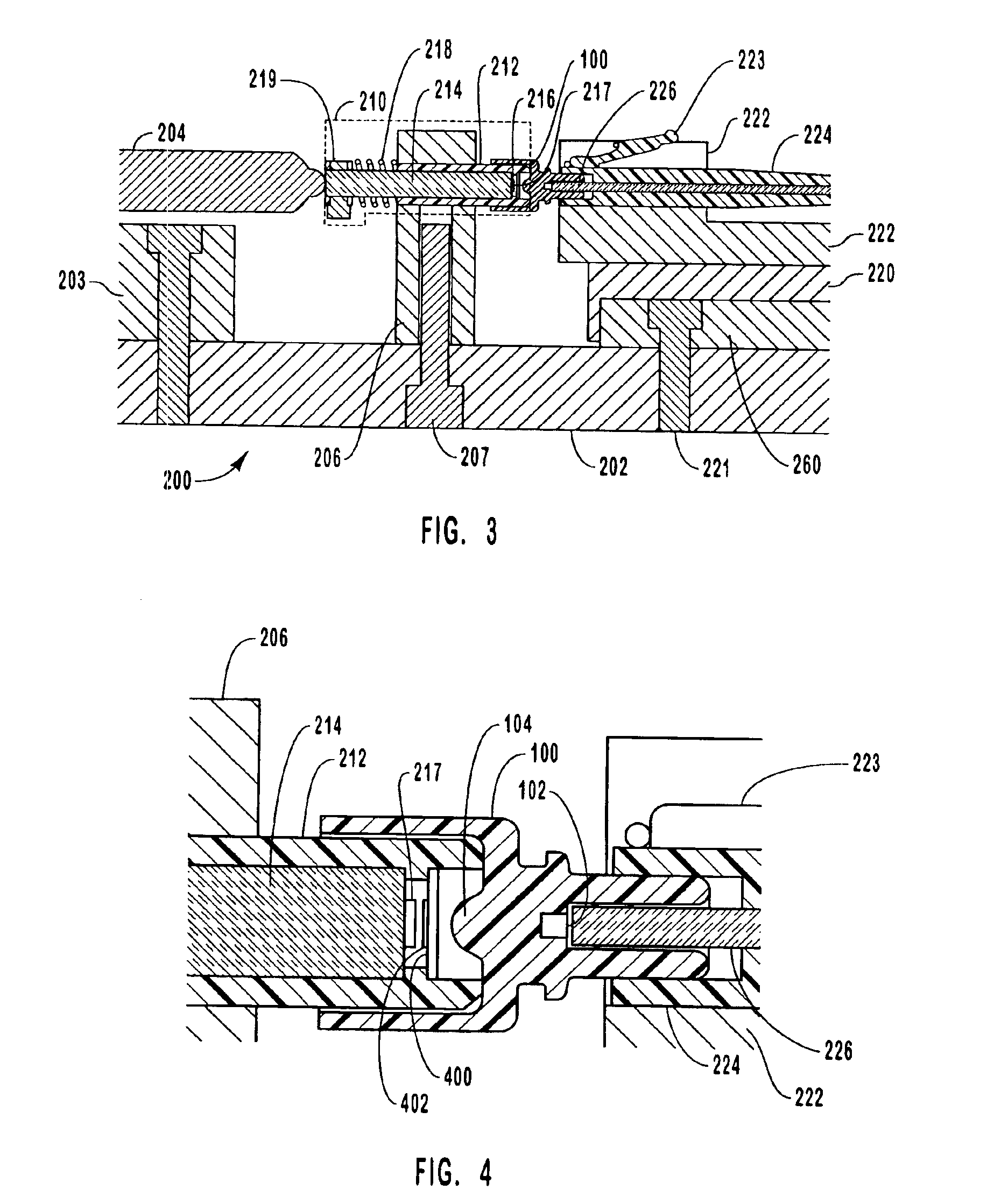Apparatus and method for testing optical transceivers
a technology of optical transceivers and apparatuses, applied in the field of systems, apparatus and methods for testing optical transceivers, can solve problems such as introducing errors and aberrations into the optical system, reducing the size of detectors, and reducing the size of optical transceivers
- Summary
- Abstract
- Description
- Claims
- Application Information
AI Technical Summary
Benefits of technology
Problems solved by technology
Method used
Image
Examples
Embodiment Construction
[0022]Small form factor optical transceivers that contain small optical elements are preferred in optical communication networks for their small size, their low cost, and the integrated nature of the optical port design. In particular, these optical transceivers are able to incorporate small lenses that are used, for example, to couple laser or source light into transmission fibers (a transmitter optical port), as well as image the output of an optical fiber onto a detector (a receiver optical port).
[0023]Efficient coupling of a source light into an optical transmission fiber achieves adequate transmission power with minimum source strength. Furthermore, it becomes increasingly important to efficiently image the output of a fiber onto a detector as the physical size of the detector decreases. As previously stated, the small size of the optical transceivers, the embedded nature of the optical elements, the difficulty in measuring the optical quality of the embedded lens, and the like...
PUM
| Property | Measurement | Unit |
|---|---|---|
| optical quality | aaaaa | aaaaa |
| force | aaaaa | aaaaa |
| resilient | aaaaa | aaaaa |
Abstract
Description
Claims
Application Information
 Login to View More
Login to View More - R&D
- Intellectual Property
- Life Sciences
- Materials
- Tech Scout
- Unparalleled Data Quality
- Higher Quality Content
- 60% Fewer Hallucinations
Browse by: Latest US Patents, China's latest patents, Technical Efficacy Thesaurus, Application Domain, Technology Topic, Popular Technical Reports.
© 2025 PatSnap. All rights reserved.Legal|Privacy policy|Modern Slavery Act Transparency Statement|Sitemap|About US| Contact US: help@patsnap.com



